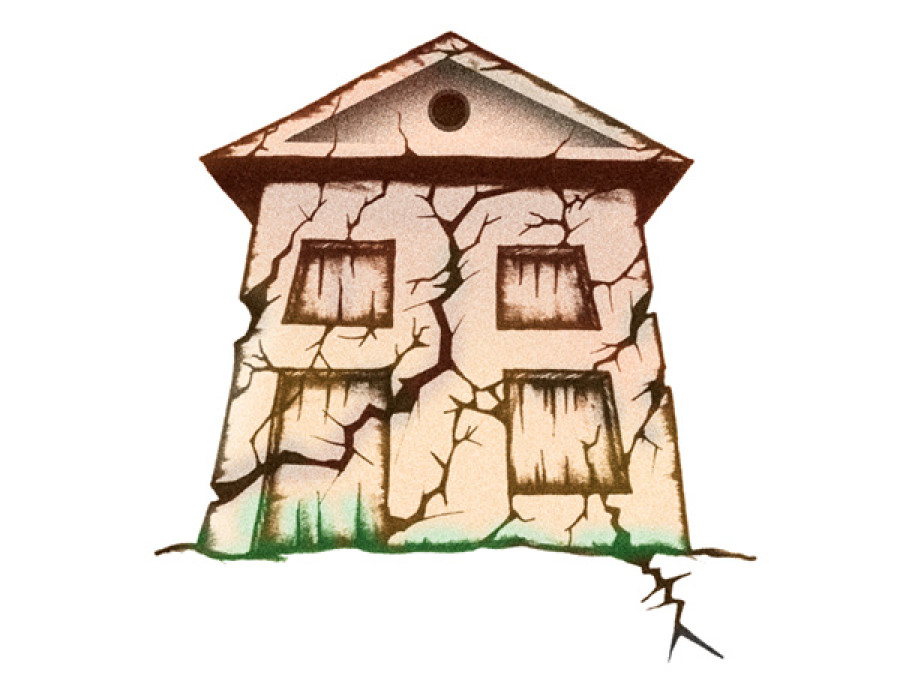Opinion
Not enough
Merely celebrating Earthquake Safety Day will not result in an earthquake-safe community
Gyanendra Gurung
This week on Magh 2, Nepal will mark the 81st anniversary of the ‘Great 1934 Earthquake of Nepal’ that killed more than 17,000 citizens, and from 1998, this day has been celebrated as the Earthquake Safety Day. Like every year, the public will be entertained with elaborate pageantries of ribbon-cutting dignitaries, dressed in brightly-coloured safety vests, laying foundations for earthquake-proof infrastructures hither and thither, and maybe kneeling down in earthquake drills before donors. This will be the 18th ceremony of what (most probably) started out as an ambitious crusade for prepping the public, particularly urban dwellers, for the next ‘big one’. However, to create an ‘earthquake-safe community’ is still a far cry. While many earthquake victims still suffer helplessly in the cold, one does wonder whether such yearly fanfare with pert slogans is actually effective at all. Though all nations, whether small or big, face similar challenges in the aftermath of catastrophic earthquakes, are 18 years not enough for someone to come up with an effective roadmap for response and recovery?
Lucky city
One does not need to be proficient in the complicated science of engineering seismology to distinguish between the shaking of the 1934 earthquake and that of the recent one. If one is to read the detailed account of the late Brahma Shumsher Rana in his famous book Nepal ko Mahabhukampa (The Great Earthquake of Nepal), it is clearly written that Kathmandu experienced “strong earthquake waves” with uneven amplification of ground motions in different parts of the Valley. Such feverish shaking is characteristic for a bowl-shaped Valley filled with layers of sediments of an ancient lake. So, when 99 percent of the houses in areas built over thick ancient lakebed sediments such as Bungamati, Lubhu, and Khokhana were destroyed in 1934, Rana obviously concluded that the ‘greatest tremors are felt in sandy places than in rocky land’.
It was due to such fears—vulnerable geology coupled with the high rate of seismicity of the Himalayas—that prompted experts to expect the worst for the Capital. However, the death toll in the Capital due to the Gorkha earthquake was comparatively less than expected and it had nothing to with the outcome of our yearly awareness campaigns. We must not forget that ground shaking caused by earthquakes varies and it depends on the earthquake’s magnitude, distance from the epicenter, and the type of underlying geology in the area. While the Valley was primed and poised for extreme ground motion amplification, mother nature somehow decided to shake Kathmandu in an unexpected manner. When the seismic waves reached the sediment-filled Valley, the shaking progressively decreased and the ground underneath the Capital rolled and rippled—like a rug that was lifted and forcefully patted down—and this slow swaying wave cradled the small houses in its rippling motion, while sending tall buildings wobbling in the air. Though the unfortunate event surprised the experts, it was not a new phenomenon at all. In a recent seismological journal, it was concluded that the behaviour was “nonlinear”, and such phenomena has occurred in other parts of the globe as well. Thus, it was the nonlinear effects of the Gorkha earthquake that saved the city from a nightmare.
Glimpse of the past
It is difficult to outline the full extent of the destruction throughout Nepal caused by the 1934 earthquake from limited historical data, but scientific observations of the Gorkha earthquake do offer us a glimpse of what might have happened then. For example, scientists have mapped out more than 4,000 landslides triggered by the 2015 quake within the region from the Kali Gandaki River in the west to the Arun River in the east. Now, this is quite a small number for a magnitude 7.8 tremor; in 2013 a much smaller magnitude 6.6 Lushan earthquake in China triggered more than 22,000 landslides. Just imagine the intensity of landslides that might have been triggered by the 1934 earthquake, which had a magnitude of 8.2.
What about the social aspects of the 1934 quake? Well, I do not profess to know much about this, but a disturbing and ugly truth surfaced during the 2015 quake—as reported in the social audit of the 2015 quake conducted by Martin Chautari and others—that there were prevailing disparity among gender, class, and caste during the post-quake relief work. If such primitive minds and archaic practices coexist in such modern times, imagine how severe the discrimination against certain groups must have been back in 1934. If we still refuse to rid ourselves of such primordial state of mind, no amount of public awareness campaign will help us achieve our goal of disaster resilience.
Always on top
In the face of the Gorkha earthquake, all existing disaster risk reduction (DRR) programmes formulated over the past three decades failed. In spite of this, we have to give credit where it is due. Did you know that Nepal leads the race among other South Asian countries when it comes to earthquake awareness? Of course, all thanks go to our beloved I/NGOs. Nepal stands out as an exemplary nation that formulated several legislations, policies, initiatives, etc., on DRR, in spite of a feckless government.
And, does it not warm your heart when you learn that our Earthquake Safety in Schools programme is regarded a model? It is amazing that we are really good at teaching others to build safe schools, while we miserably watched our own schools turn to rubble on April 25th. Again, we have to thank our donors and I/NGOs for these ominous awards of excellence. Well, you might argue that a few schools did survive, but if it takes 17 Earthquake Safety Days to save a few dozen schools, then how long do we have to wait to make all our schools safe? A hundred? A thousand? How many years of relentless—and redundant—campaigning do we need?
Eighty-one years after the Great 1934 Earthquake of Nepal, and eight months into the Gorkha earthquake, we are nowhere near firing the starting shot in what appears to be a snail’s race towards fostering a disaster-resilient society. How much longer will it take our nation to at least build an effective disaster recovery system that has the capacity to quickly rebuild infrastructure and revitalise livelihoods? When will our leaders become ‘aware’ of the real dangers of earthquake and open their eyes to the tragedy currently afflicting their citizens? So, maybe it is not the people that need to be informed this year. But, instead it is the organisers and leaders themselves who need to be made aware of their ineffectiveness and lack of political will in acting responsibly towards our goal of an earthquake-safe community.
Gurung is a Post-doctoral Research Fellow at Chonbuk National University, Jeonju, South Korea




 21.12°C Kathmandu
21.12°C Kathmandu










